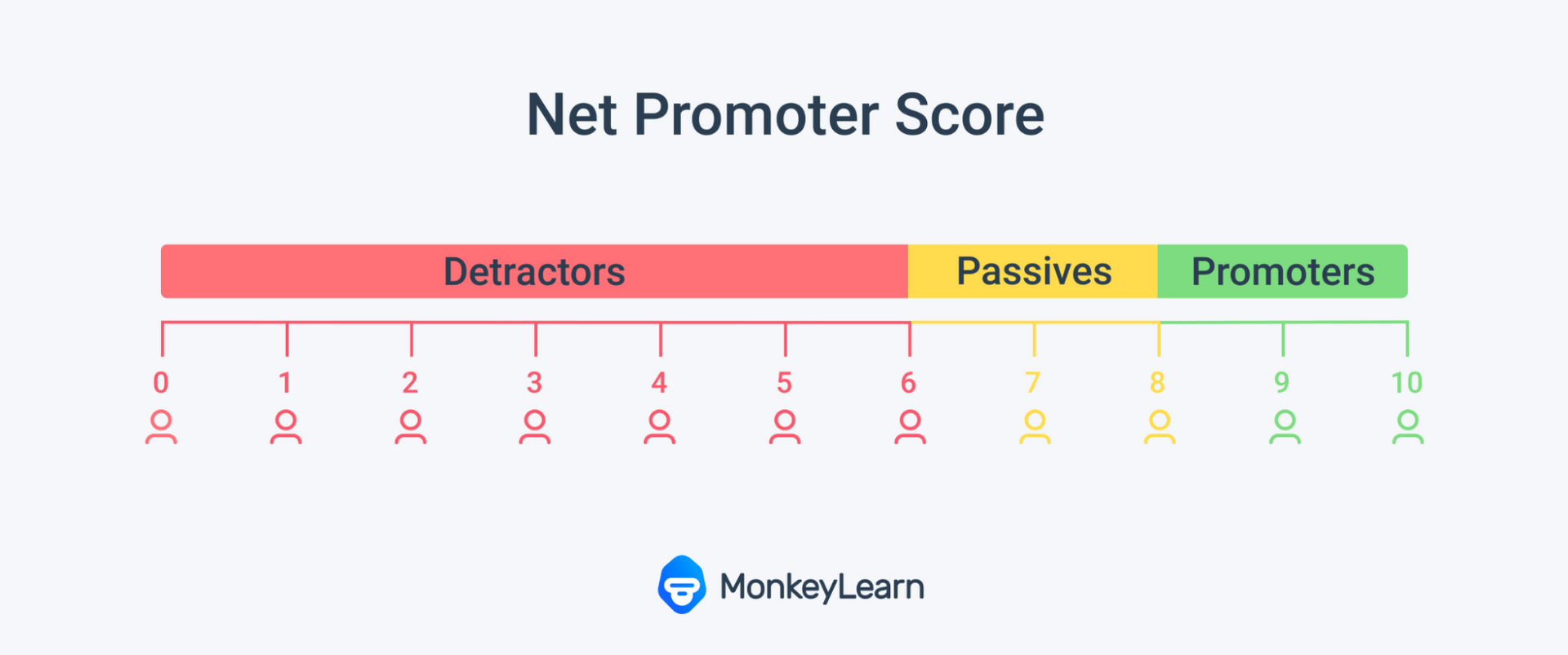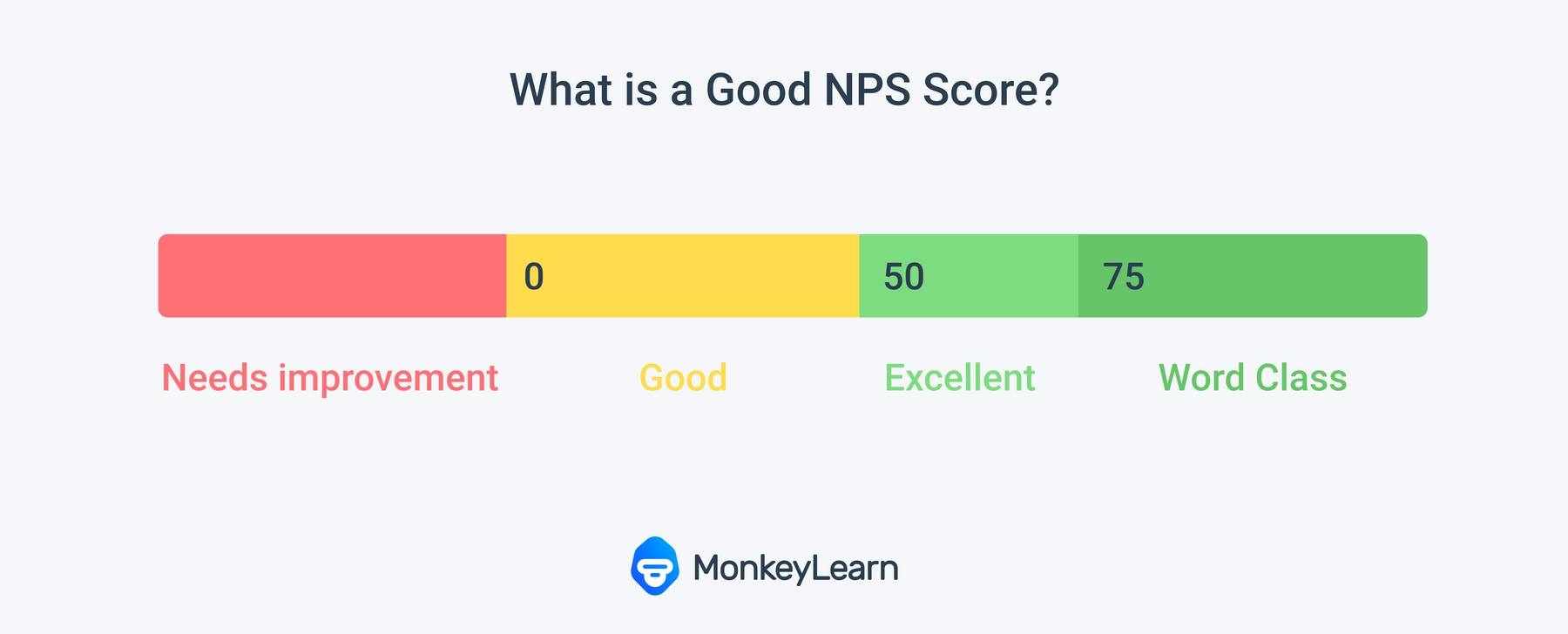The Net Promoter Score Question: Customizing NPS

If your customer experience team understands the value of a great Net Promoter Score (NPS), then the next step is unlocking NPS’s full potential.
Like lifting the hood of a car and poking around at the engine, studying the math behind and the inner workings of NPS can lead to greater understanding and greater results.
An understanding of an advanced approach to NPS will revolutionize your customer experience management approach, allowing your teams to:
- Get the most out of default NPS by customizing its components
- Better interpret its results in order to inform future surveys
- Implement alternate NPS questions to evoke specific customer insights
In this deep dive into the NPS question we’ll explain the background behind default NPS. Then, we’ll enumerate how you can modify said default NPS question to achieve all of the benefits listed above.
Click through to the section most suited to your NPS approach.
- Net Promoter Score Survey Question: Default NPS
- How to Calculate NPS Score
- Types of NPS Questions
- How to Use Specific NPS Questions: NPS Alternates
- Takeaways
Net Promoter Score Survey Question: Default NPS
The Net Promoter Score question is designed to measure loyalty in your customer base. It asks, “How likely is it that you would recommend this company to a friend or colleague?”. Then, it gathers answers from 0 to 10, 0 being not likely and 10 being extremely likely.
Now, this is the most popular version of the NPS question – it is the default from which alternatives are derived. And, it’s useful for periodically getting a sense of the baseline loyalty of your customers.
It measures this loyalty by segmenting your customers into three groups, then plugs the number of customers in these groups into a formula, leaving you with an average – this is your NPS score.
The three groups that NPS divides your customers into are Promoters, Passives, and Detractors. Based on their response, customers are divided along the following lines:

Next, you take your newly segmented responses and calculate your score using the handy-dandy NPS algorithm.
How to Calculate NPS Score
The algorithm behind NPS is simple. You calculate the number of Promoters and Detractors as an average of your total responses, then subtract the percentage of Detractors from the percentage of Promoters.

For instance, say you have 10 total responses, 5 being Promoters, 3 being Detractors, and 2 being Passives.
First, you turn your number of Promoters and Detractors into percentages relative to total responses. For Promoters: 5/10 = 50%. For Detractors 3/10 = 30%.
Then, we perform the equation pictured above. 50% (Promoters) - 30% (Detractors) = 20 (NPS Score).
Finally, we can locate our example score along the following chart to get a general sense of where our NPS stands.

In this case, a score of 20 would land you solidly in the ‘good’ range. This is because the score is greater than 0, meaning we have more Promotes than Detractors.
Keep in mind, this is by and large a generalization - NPS scores are best considered in context. This means a) as a benchmark in contrast to a timeline of previous scores to track growth, and b) relative to other company’s in your industry. To learn how to do this, check out our article on what constitutes ‘good’ NPS and how to weigh your score.
Types of NPS Questions
However, Net Promoter Surveys are capable of much more than just establishing a baseline. They can be further leveraged for product and/or feature specific insights by slightly modifying the NPS question.
Furthermore, in order to know which features to investigate, your base NPS questions can be paired with an open-ended comment box. This is meant to elicit the ‘why’ behind the scores respondents leave behind.

This open-ended question is the second, integral part to any successful NPS campaign. It opens the door for qualitative text feedback, allowing your respondents to explain the drivers behind their ratings. Addressing these drivers is the number one key to resolving any pain points in order to both improve your service and raise your baseline NPS.
Because these are written responses, you’ll be left with a ton of raw text data. Turning this qualitative data into qualitative insights can be made much easier through efficient text analysis.
Text analysis AI platforms, like MonkeyLearn, are custom-made to reduce the man hours and headaches that come from manual analysis. They run scripts that parse through text both in real-time and at scale, allowing you to turn any size pile of text responses into actionable insights.
Feedback analysis experts have put an emphasis on customizability, compatibility and easy-to-use dataviz when creating these cutting edge platforms. As a result, they are cheaper and faster than creating custom machine learning software from scratch, as well as easier to use, allowing for streamlined onboarding.
To make these insights even more useful, it’s important to ask the right questions so your CX teams can dig into their most pressing issues.
How to Use Specific NPS Questions: NPS Alternates
The beauty of NPS is that the baseline question can be reworded however you like to fit any scenario. The following options are common examples that you can either sample from or use for inspiration.
Here are the problem areas we are looking to address with our sample questions.
- Improve product/services
- Identify referable customers
- Inform product roadmap
- Improve marketing and sales strategies
- Close feedback loop
1. Improve product/service
This is the classic example of how to dial in on a specific touchpoint with NPS.
To tease out responses regarding a specific pain point in a product/service, you can ask,
“How likely are you to recommend (product/service) to a friend or colleague?”
Your product teams can then use the responses to inform future development decisions.
2. Inform product roadmap
Here, it's useful to go to the second part of your NPS survey, the open-ended question.
You can word your open-ended question differently to hone in on service specific preferences by asking:
“Which product features do you like the most?”
This question works by addition through subtraction - by knowing which features are working and don’t need maintenance, your team is left free to prioritize other areas.
3. Identify referable customers
Here you again modify your open-ended question, this time to better understand your target audience. The question becomes:
“Why did you choose our product over the competition?”
This zeroes in on what makes your company exceptional. By learning what makes you stand out, you can better understand your target audience and their motivations.
By better understanding who you are selling to, you are able to sharpen your advertising campaigns allowing you to more effectively detect and attract new customers.
4. Close feedback loop
Closing the feedback loop, meaning addressing and fixing pain points so the endless problem-complaint cycle is solved before a customer's eyes, is invaluable to CX teams. In essence, it can turn Detractors into Promoters.

Studies have shown that customers who see their concerns addressed can actually have higher regard for a company than customers who never had an issue in the first place.
The best way to resolve customer issues is not just by addressing the question this time, rather, it is acting on accurate feedback insights.
Machine learning algorithms, like the MonkeyLearn Suite’s, can help you make the most out of your customer feedback by accurately transforming qualitative text data into quantifiable results.
Takeaways
NPS shouldn’t be thought of as a one-size-fits-all yardstick for customer experience - it can, and should, be so much more.
CX teams who put a priority on future strategy are wise to think of their NPS campaigns as catch-and-release experiments. This means each survey provides the most value when it is used to inform and shape future surveys.
In this manner, you are able to slowly make every survey more specific to your company’s services, and provide your teams with helpful data to guide future inquiries.
AI tools like MonkeyLearn can make this process much easier by taking your feedback analysis approach to the next level. It’s automated algorithm is a shortcut to actionable customer insights, and it’s data visualization studio can display the results all in one place, continuously.
Sign up for a free trial today, or schedule a demo with one of our feedback experts. Or, continue reading about NPS and all things analysis on our blog.

Inés Roldós
July 29th, 2021







